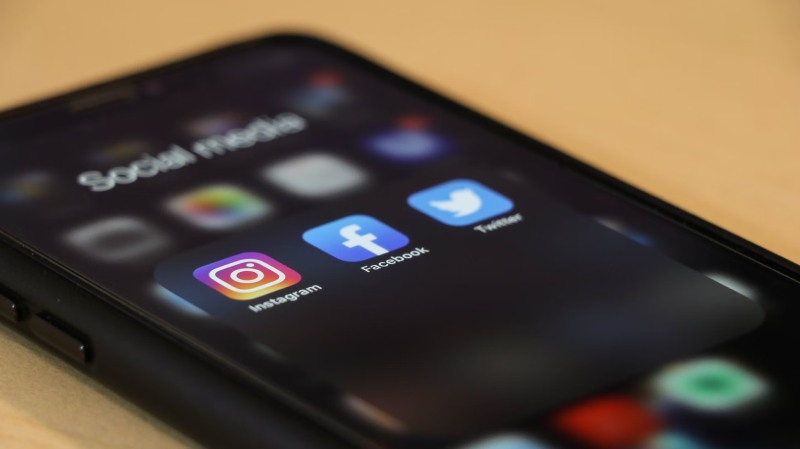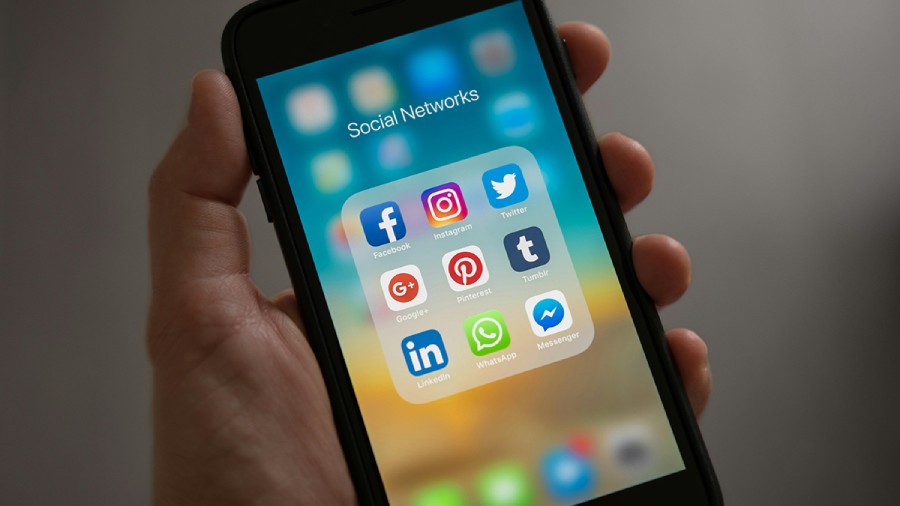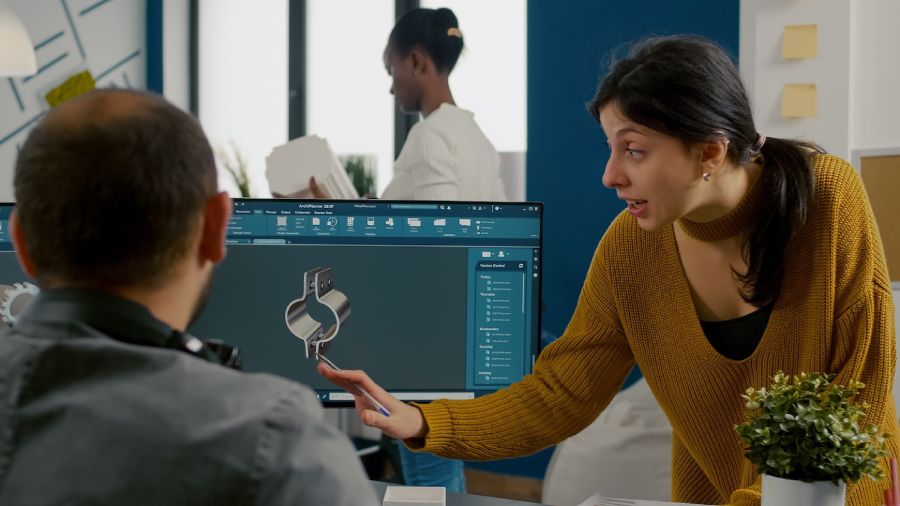
Top 7 Ways To Use VR & AR In Mobile App Development In 2022
Virtual and augmented reality (VR and AR) are the two main buzzwords in the technology world today. What started as an entirely new, very different technology has quickly transformed into something we all enjoy and find helpful. According to TechJury, revenue for this technology will hit $340 billion by 2028, while the AR market alone is projected to be worth over $18 in 2023.
This is more prominent than ever in terms of mobile use. Seeing how more and more people are using their phones to make decisions, purchases, or simply to entertain themselves, AR and VR are deeply embedded into mobile applications.
For app developers, this opens up tons of amazing opportunities. Based on the interest and numbers so far, investing your time and effort into VR and AR mobile app development is a smart move today.
If you are looking to develop and successfully launch an app that uses VR and AR, this article is for you. In it, we will discuss the best ways to use it in app development in different industries, discuss new AR&VR trends of 2022, and describe the best mobile apps that use these technologies and become popular this year.
But first, let’s see why you should be considering AR and VR for your apps in the first place.
AR And VR Technologies And Their Popularity Today
Nowadays, AR and VR have tremendous applications in all areas and industries. They are known as cutting-edge technologies that are primarily used in entertainment and gaming but go beyond it. Starting from education to eCommerce to app creation, AR and VR are used everywhere.
If we take a look at the Statista’s predictions for 2028, AR and VR will grow more than ever in just a few years that follow.

This is not unexpected at all considering how many benefits the two technologies have these days. For example, AR and VR help remove communication barriers and can assist with things like creating shared spaces and translation. Meanwhile, virtual reality enables many people today to remotely attend shows and conferences visually. Let’s not forget how amazing it was to view live events with the help of VR during the pandemic, and share the same experience simultaneously with people that were not near us.
Most importantly, augmented and virtual reality make the customer experience more realistic and comfortable. Nowadays, AR allows users to virtually try on clothing, check out houses, pick cars and furniture, etc. The enhanced experience is known to lead to positive responses and better results for businesses.
Without the need to create tables, infographics, charts, and endless means of visualizations to share your offers with people, you can save tons of money. AR and VR offer that too – an affordable way to provide users with 3D rendering and help them make their decision.
If you are looking to find some inspiration for your app, you’ve come to the right place. Below you’ll learn about the top 7 uses of VR&AR technologies in mobile apps by different businesses nowadays.
The Top 7 Uses Of VR And AR In Different Areas In 2022
Now let’s get started with those ideas for your new app.
1. Gaming App
AR and VR are most used in the world of gaming. This is the biggest earning media sector today with $165 billion in revenue measured in 2020 alone.
PokemonGO was just a start of a popular trend going around the gaming world. Nowadays, there are plenty of games that use AR technologies, including The Walking Dead: Our World, one of the top-rated titles.
Some promising business opportunities for AR/VR apps are escape rooms that can be used in any physical space as long as you are ready to invest in equipment, too. Or, you can opt for the traditional methods and use your creativity to develop a game app using this technology.
VR & AR offer innovative games that go beyond imagination. The concept of 3D films is nothing new to the public, but it’s enjoying an even larger appeal thanks to games that use this technology. By using 3D effects in your games, you are giving your players an enthralling experience that they cannot get with traditional games.
To bring forth the captive experience that the audience expects in new game apps today, developers need to create a situation in which their players could play in the avatar, too.
2. Interior Design App
When we speak about interior design and VR/AR, most of us think of IKEA. This popular interior design store made it possible for users to visualize their entire room with 3D models of the brand’s furniture.
Thanks to apps like IKEA Place, users can test their ideas and see how the company’s products fit into their place. They can also switch colors, calculate the cost, etc.
The AR and VR-powered apps for furniture, decor, and interior design provide the much-needed hands-on experience that customers have been looking for. Even 71% of customers confirm that they are more likely to purchase these items when they have an AR view of the products they are considering buying.
For example, an architecture of a house can be presented with a 3D view, but these models will lack the surrounding of the premise and the actual context it has. AR, on the other hand, makes this more definitive and provides people with more details than they used to have before.
If you capture images from many angles, you can showcase not only the appearance but also the feel of the house along with the environment. The images can also be treated with decor and design attributes to show people what their new home would look like if they opt to buy it.
If you create such an app, people can use your guided virtual tours to assess the property and make their final decision. Viewpoint technology helps architects in developing guided tours they use to navigate and move around virtually.
People use AR and VR apps and tools to reveal the look and navigate within a premise without setting foot in it. They can also add, tweak, and remove details in the home to get a more thorough and quick evaluation of the interior design project.
3. Real Estate App
Just as people can use apps to pick furniture, they can use them to choose a home. Instead of traveling for miles to find the best home and spending their limited time checking out houses, homeowners today can check 2D and 3D visualizations to narrow down their choices and find the perfect home.
Real estate apps have been really successful in the last couple of years. People now use them to find a home in a location that’s not close, narrow down their choices, as well as visualize what their new home will look like.
4. Retail And ECommerce App
These two technologies are reshaping shopping as we know it. Instead of guessing what a piece of clothing will look like, AR and VR apps allow shoppers to get a very realistic experience.
Take, for example, Lowe’s Vision in-store navigation. Their app allows customers to use their phones to walk around the store without being physically present there. Customers can view the items, their prices, any special offers, and discounts, and make a purchase right then and there without having to step foot in the actual store.
Some retailers have taken this even further. The Nike app, for example, enables you to scan your feet and get a sizing recommendation! This eliminates that old fear of buying the wrong shoe size and having to go through the ordeal of changing them.
In the eCommerce world, this opens up many new possibilities. Store owners can now use such apps to sell products without the expenses that come with physical stores, employees, etc.
5. Tourism/ Travel App
There’s so much about tourism that you can use to create an amazing app. Those that travel and provide services related to tourism need to handle bookings, tours, local experiences, transportation models, and more.
Virtual and augmented reality offer tons of business opportunities in this industry. For starters, there’s navigation. Even Google Maps has an AR upgrade, allowing users to view streets through their camera and see the directions automatically appear on their screens.
One great idea for you is a GPS app powered by AR where you will translate sign streets, give tips to tourists, show them the routes they need to take, etc.
Many travel companies today are willing to use such apps to attract more customers. Museums are a great place to use such apps, too. VR museums today provide experiences by transporting visitors to different places and ages, offering more information to enrich the visitor’s experience.
6. Education App
VR and AR have tremendous applications in education. This opens up plenty of opportunities for your new app, especially now when the world is still dealing with some distancing restrictions due to the pandemic.
AR and VR technology make schooling more engaging, interactive, and accessible. Students can get more hands-on knowledge on a variety of topics, as well as enjoy a more interesting experience that differs from the traditional, books-only approach.
Speaking of education, these technologies are also widely used for training. If you are up for the task, you can work on apps that help people train more efficiently. Nowadays, VR training simulators are used in anything from aviation and construction to athletics and automotive industries.
7. Marketing And Advertising App
Lastly, you can create an app that will enrich the marketing world. Creative use of these technologies can boost the likelihood of purchasing for customers. It offers a new form of entertaining content that invite more people toward a brand.
Many marketers haven’t used this technology in their work so far, which gives you a great chance to surprise the customers and get a step ahead of the competition.
One Final Tip For You!
This article told you about the best uses of AR and VR in apps today. It is now time to turn your idea into reality. No matter how great your idea is, the quality of your app will depend on the developer you hire.
These technologies are not simple to work with, so you need the best person for the job. If you need some help in finding them, customize this iOS developer job description and use Homerun to optimize the hiring process. This tool will help you find the perfect person to create your new app.
At this point, you should communicate with the developer to decide how much the app will cost you and create a business plan for it. After that, you are ready to get started.
Good luck!

Law Firm Management: How Technology is Driving Efficiency

Most Popular Social Networks: Dominating Online Platform







